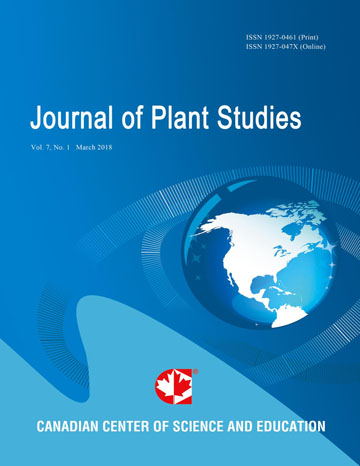Morphological Diversity of Farmers’ and Improved Potato (Solanum tuberosum) Cultivars Growing in Eritrea
- Biniam Ghebreslassie
- S. Githiri
- Tadesse M.
- Remmy Kasili
Abstract
Farmers’ and improved potato (Solanum tuberosum L.) cultivars growing in Eritrea are main sources of food and income to many growers. The current study was proposed to characterize 17 farmers’ and 4 imported cultivars of potato using 33 morphological descriptors. Planting was done in two geographically distinct locations, HAC and Asmara, Eritrea. The experiment was laid out in a randomized complete block design with three replications having 18 plants per plot. Plants grown at HAC emerged early (24.52 days) and reach maturity (94.84 days) while at Asmara it took 43.77 and 123.59 days, respectively. However, yield was higher in Asmara (0.49 kg/plant) compared to HAC (0.37 kg/plant). An accession having many and longer stems was associated with more tuber production, but inversely related to yield. Similarly, accessions with higher stem thickness and tuber size were associated with high yields. The PCA analysis indicated that the first four components explained about 85% of the total variability among the studied materials. The PCA clustered the materials in to four main groups (GI, GII, GIII, GIV) mainly explained by flowering patterns and yield related descriptors. The work has provided useful information on morphological characteristics of the farmer’s potato to avoid duplication of resources and identify promising materials for future breeding program.
- Full Text:
 PDF
PDF
- DOI:10.5539/jps.v5n2p63
Index
- AGRICOLA
- CAB Abstracts
- CABI
- CAS (American Chemical Society)
- CNKI Scholar
- Elektronische Zeitschriftenbibliothek (EZB)
- Excellence in Research for Australia (ERA)
- Google Scholar
- JournalTOCs
- Mendeley
- Open policy finder
- Scilit
- Standard Periodical Directory
- Technische Informationsbibliothek (TIB)
- WorldCat
Contact
- Joan LeeEditorial Assistant
- jps@ccsenet.org
